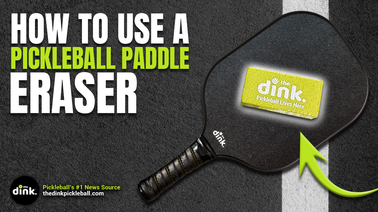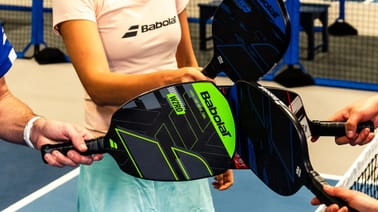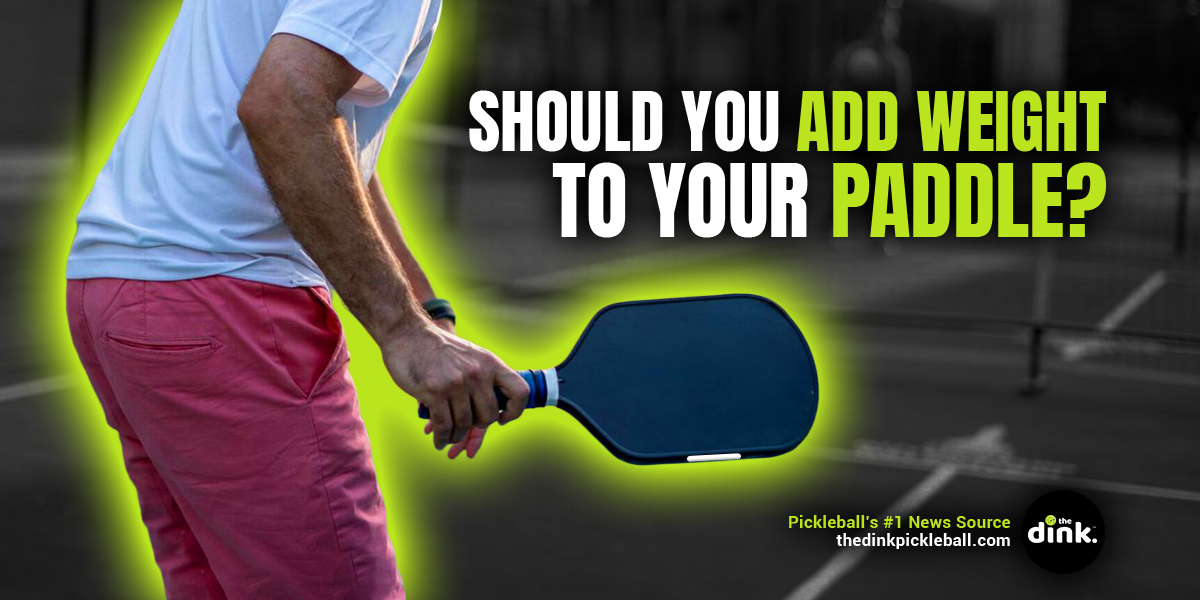
Our recent poll question asked, “Do you add any additional weight to your paddle, and if so, how much?”
Here are the results:
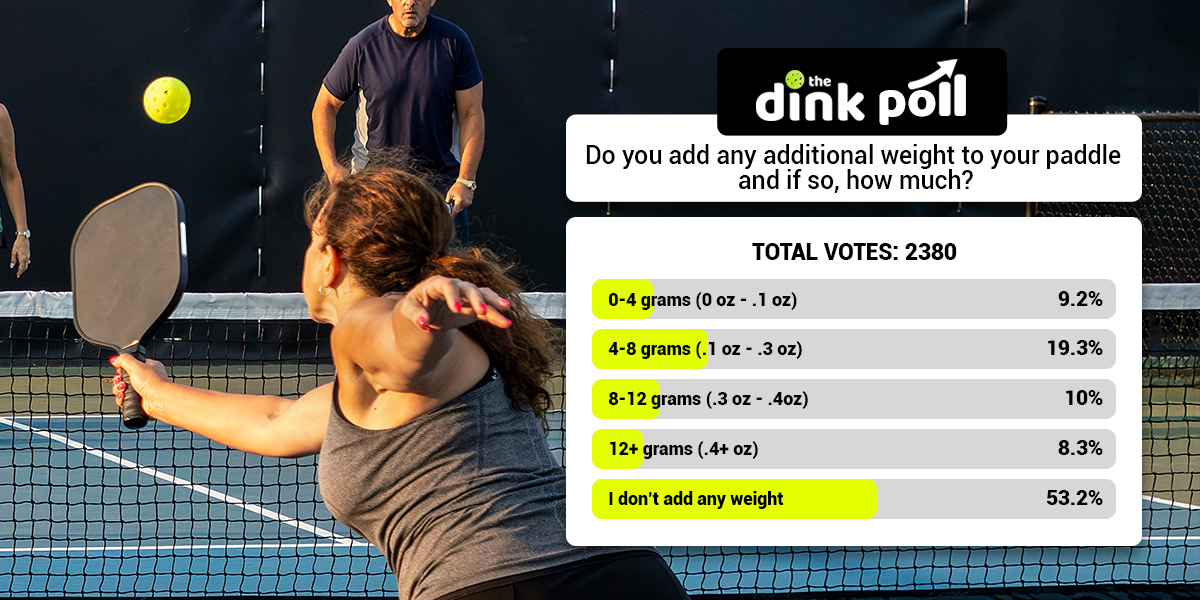
Poll Results
- 0-4 grams (0 oz -.1 oz) = 9.2 percent
- 4-8 grams (.1 oz -.3 oz) = 19.3 percent
- 8-12 grams (.3 oz -.4 oz) = 10 percent
- 12+ grams (.4+ oz) = 8.3 percent
- I don’t add any weight = 53.2 percent
While more than half of the 2,380 votes (53.2 percent) said they don’t add any weight, the amount for those who do varied. A total of 19.3 percent of you said the sweet spot is 4-8 grams (roughly .1 - .3 ounces), and only 8.3 percent said you add 12 grams (.4 ounces) or more.
We'll discuss the options for altering your paddle and will help you decide if adding weight could improve your game.
Want to participate in polls like this in the future? We publish a new poll every Monday to get a sense from The Dink readers what's important to them. Click here to subscribe to our best-in-class newsletter.
How adding weight changes pickleball paddles
Most pickleball paddles weigh about eight ounces. Obviously, the size, material, and thickness of the paddle go a long way toward making it lighter or heavier. In comparison, tennis rackets typically weigh between 10.6 and 11 ounces.
Weight makes paddles heavier
Yes, duh, of course, adding weight makes the paddle heavier. But what we mean here is more about where the weight is added. Some players prefer a heavier head weight (top of the paddle), while others might prefer a heavier handle weight.
Oftentimes, it may depend on what sport they played before pickleball. Tennis rackets are heavier than pickleball paddles, but racquetball rackets are lighter. Ultimately, though, it's about the feeling and personal preference.
Weight changes the sweet spot of the paddle
Perhaps a lesser-known reason to add weight to a paddle is that it can help alter the shape and size of the sweet spot. The sweet spot of a paddle is where the paddle hits the hardest and provides the most accurate response.
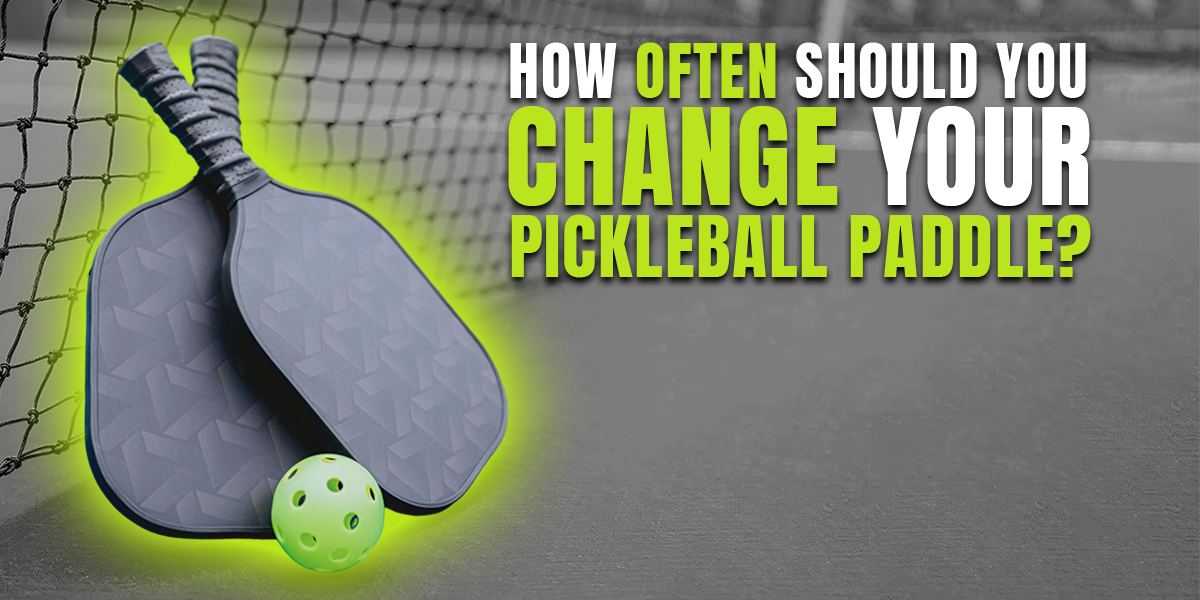
A better sweet spot means you'll mishit less, and the ball will go where you are trying to make it go more often.
Sweet spots start in the middle and spread out, typically in an oval shape. Sweet spots tend to be more horizontal on a standard paddle, while on an elongated paddle, they are more vertical.
If that sounds confusing, it may help to think of equipment used in other sports. In baseball, you typically want to hit the ball with the thickest part of the bat barrel. In golf, you want to strike the ball toward the center of the club face.
Making contact with the sweet spot provides the "truest" shot. Ideally, every ball you hit is with the sweet spot, but we all know that's not the case.
Weight adds power to your shots
A universal truth in nature is that if you can swing a heavier object at the same (or close to the same) speed as you can swing a lighter object, the heavier object will provide more power. This is why baseball players swing different-weighted bats.
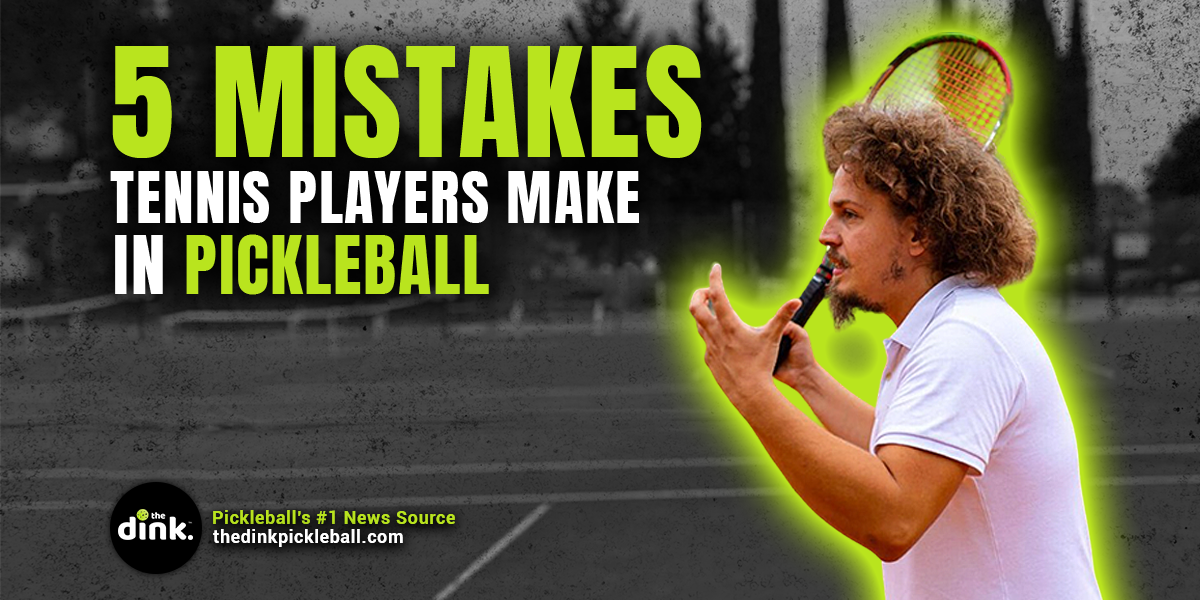
This doesn't mean that you should make your paddle as heavy as possible so that you can hit shots with insane power. Instead, you want to find the right weight or alteration for you and the type of game you want to play.
Weight makes injury more likely
The final point about adding weight to your paddle is a word of warning. Your wrists and elbows have small bones and muscles. Adding weight can strain those parts of your body and, over time, cause injury.
If you’re considering altering your paddle, always start small and add over time rather than trying to make a lot of changes (or add a lot of weight) at once.
It's also important to play with your alteration for more than just a game (as long as it's not causing harm) because you'll want to know if your body can withstand that extra weight over time.
Adding more power to your shots isn't worth it if you end up sitting on the sideline for 4-6 weeks.
How to add weight to your paddle
There are several materials used to add weight to pickleball paddles.
Lead Tape (click here to purchase)
This is the most popular method due to its ease of use and availability. Do a quick search and you'll find dozens of lead tape options available for purchase. You can get either pre-weighted strips (usually each strip is .1 ounce) or an entire roll you can cut yourself.
Tungsten Tape (click here to purchase)
Tungsten tape is a safer, non-toxic alternative to lead tape that works very similarly. The amount of weight per inch is typically lower than lead, so be sure to weigh your paddle as you add the tape.
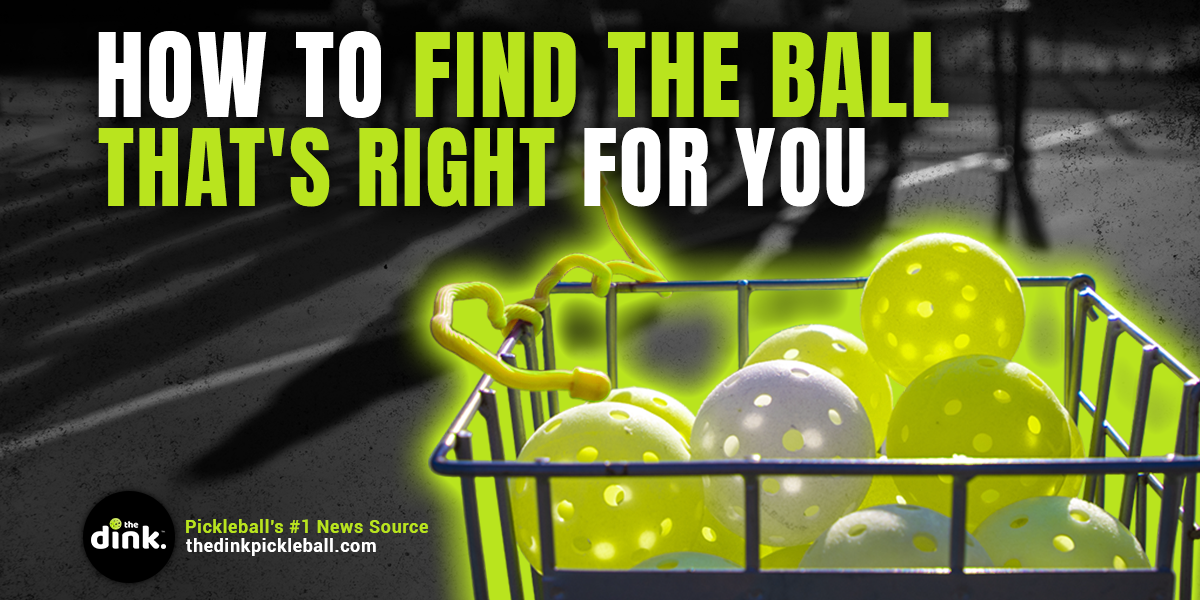
Electrical Tape
Electrical tape is the least expensive option and is great for experimenting with different weight placements. It is easy to put on and peel off.
It's important to note that electrical tape and tungsten weigh about the same (one inch equals one gram), but lead is heavier than both (one inch equals 1.8-2 grams).
Grips and Overgrips (click here to purchase)
Changing grips can impact the overall feel of the paddle, while also adding weight to the handle. Overgrips work well to protect your main grip from degrading over time from frequent use (and sweaty hands).
Just remember that anything you add to your paddle will also alter its weight. So, if your new grip makes your paddle too handle-heavy, then you may want to switch to a thinner grip or just stick with your stock grip.
Where to add weight on pickleball paddles
Results may vary, but these are the typical locations where weight is added and the benefits of adding the weight to that area.
Along the sides
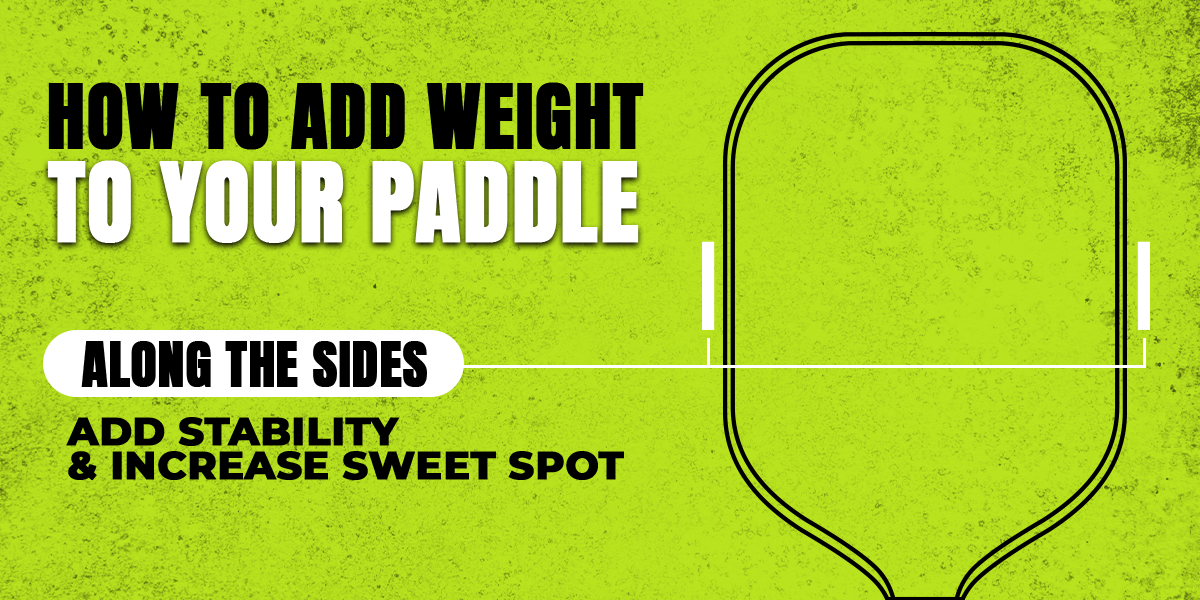
Players most commonly add weight along the sides of the paddle. This area expands the sweet spot horizontally and adds stability to your paddle face.
The stability of the paddle dictates how easily the face twists when a ball strikes off-center.
Besides adding pure weight, some players like to protect the edge of their paddle by adding an edge guard. Some edge guards are light and add next to nothing in weight, but some are thicker and can add a more significant amount.
If you decide to add an edge guard, be sure to play with your paddle first before adding any other weight to it.
On the neck
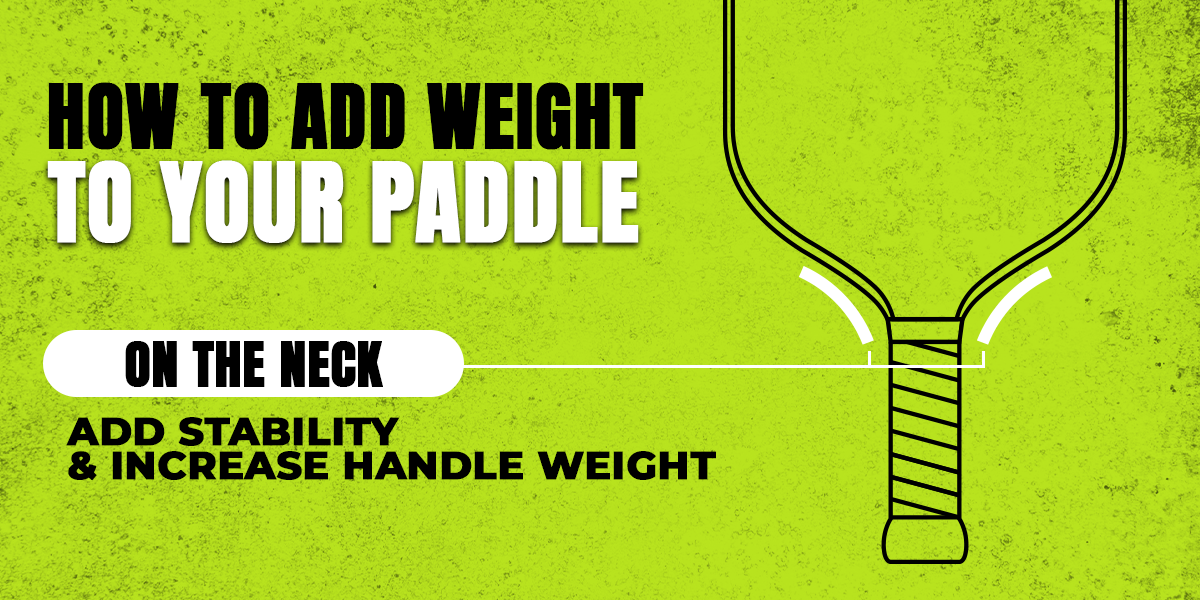
Adding weight to the curved area on either side of the neck (where the handle connects to the paddle face) can increase paddle stability and add weight to the lower part of your paddle.
Also, if you tend to miss your shots in that area, it can provide some extra pop, which might be the difference between hitting it over the net or into it.
Top edge
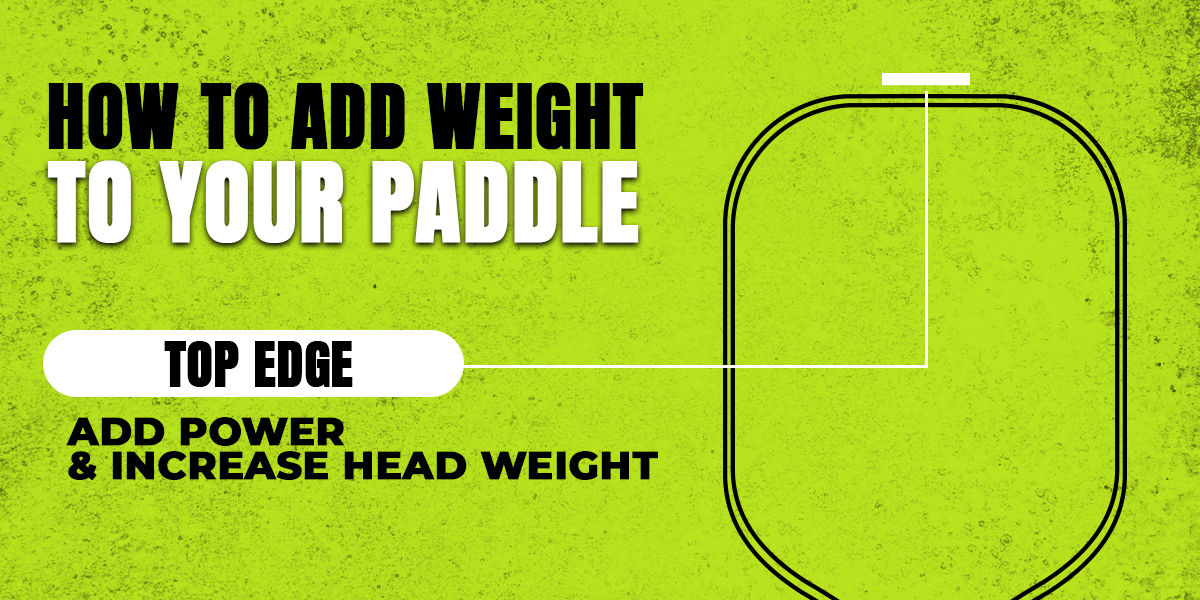
Adding weight to the top edge makes your paddle more top/head heavy. If you like to have more lag in your shots (where your paddle head trails behind your handle), this could be a good spot to add weight.
This spot provides more power but sacrifices hand speed at the kitchen. Be aware that adding weight to the top of your paddle can add extra strain to your wrist and elbow.
The four corners
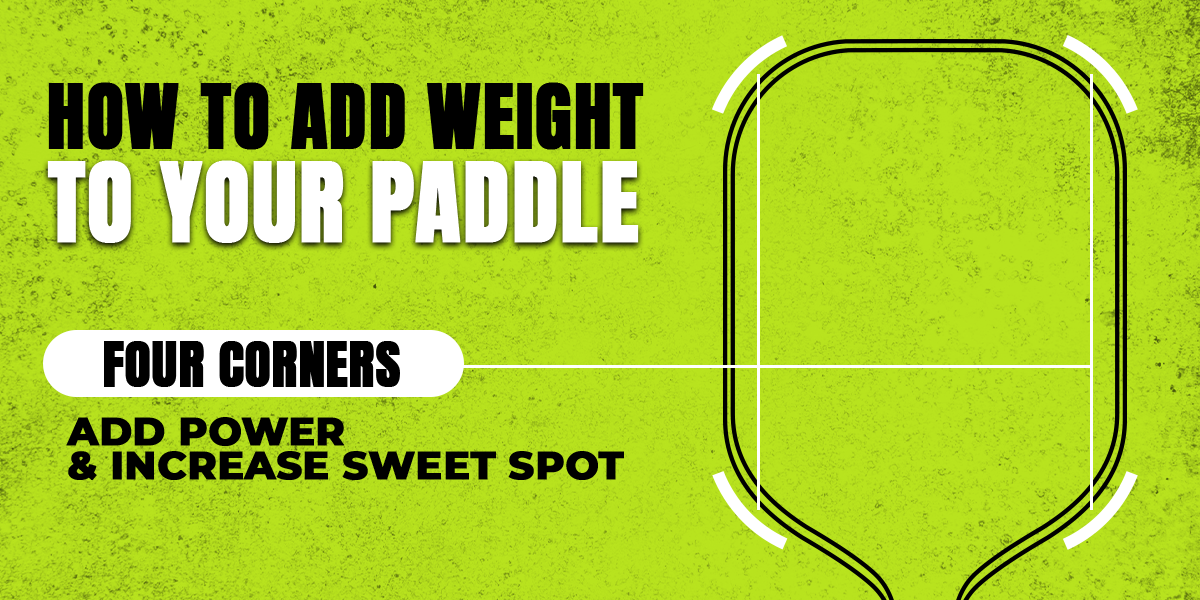
The four corners are considered the spots where the paddle curves. Putting a weight strip on each of these adds a balanced amount of weight to the paddle's top and bottom.
It also adds power and increases your sweet spot the most.
Over/Under the grip
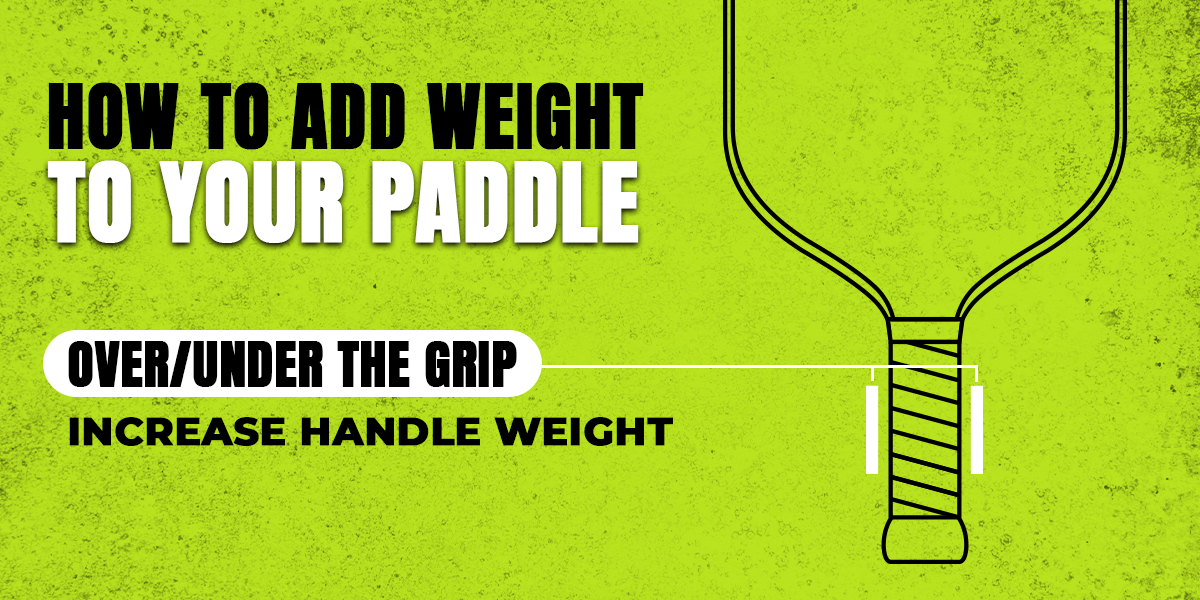
Some pickleball paddles are naturally heavier toward the head or the handle. Adding weight under or over the grip can balance a paddle you feel is too top-heavy.
You can add strips of weight either under your current grip (then put a new grip over it) or use multiple overgrips for a thicker handle feel and added weight.
Adding weight in this area can improve hand speed.
Should you alter your pickleball paddle?
Almost everyone could benefit from altering their paddle in some way, whether it's adding weight with lead, tungsten, or electrical tape or making the handle more comfortable with a different grip style.
Ultimately, it comes down to your personal preference and what seems to work best for you and your game. If you're a finesse player, consider making your sweet spot bigger and your paddle more balanced.
If you prefer power, add weight to the top of your paddle and let it rip.
Don’t be afraid to experiment over the course of a few weeks to find the right combination for you.
However, if something isn't working or starts to cause you pain, remove it immediately.
|




